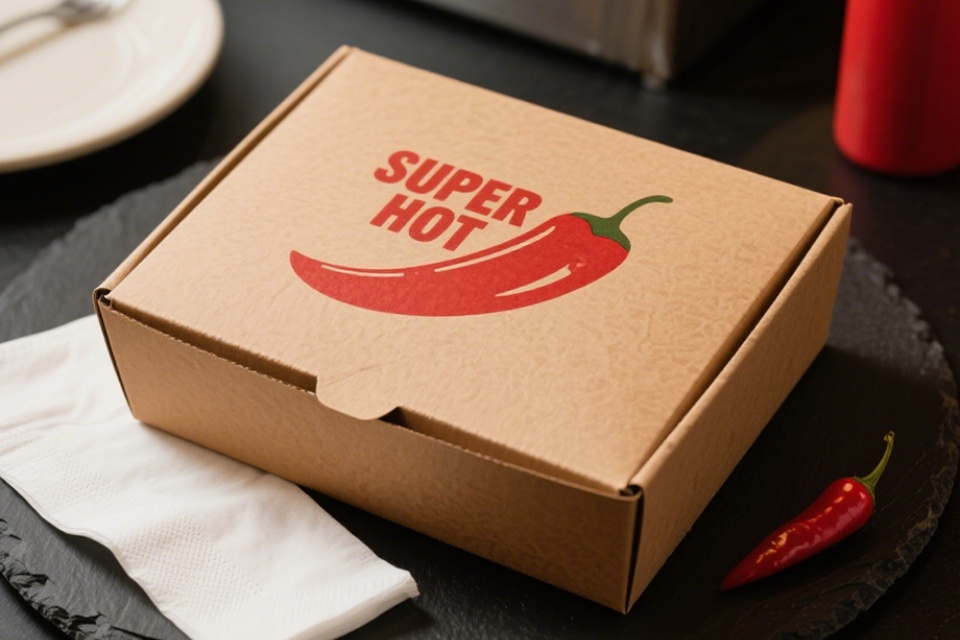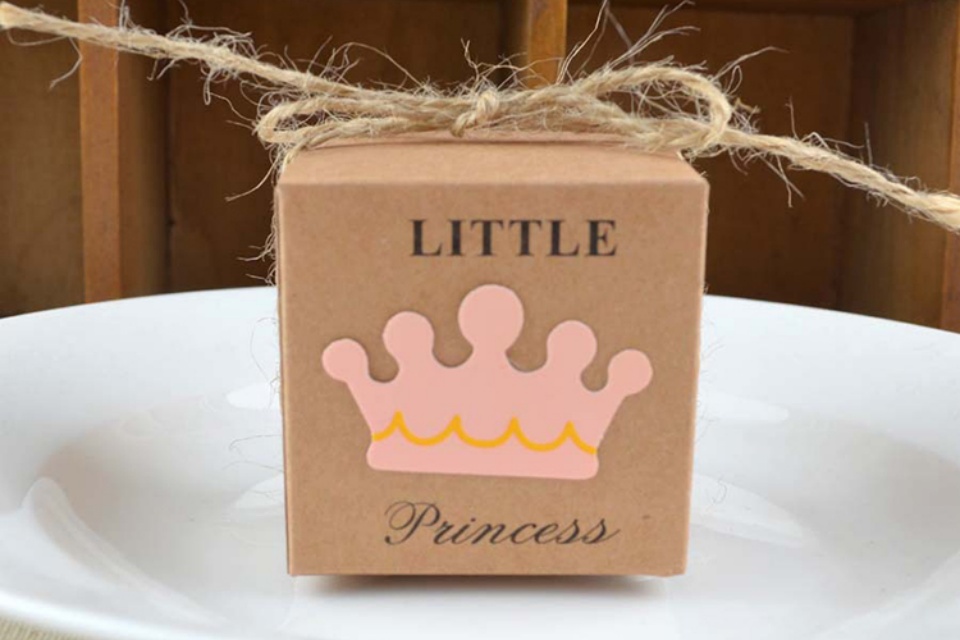Our News
Sustainable Food Packaging Solutions
Sustainable Food Packaging Solutions
Summary
Sustainable food packaging solutions refer to innovative materials and practices designed to minimize the environmental impact associated with traditional packaging methods, particularly the pervasive use of plastics. With increasing global awareness of environmental issues, including plastic pollution and climate change, sustainable packaging has gained prominence as a critical component of the food industry's efforts to reduce waste and enhance ecological responsibility. This shift is further accelerated by consumer demand for eco-friendly products, with studies indicating that a significant majority of consumers consider the environmental impact of packaging when making purchasing decisions.
Various types of sustainable food packaging have emerged, including plant-based materials, edible packaging, biodegradable options, and reusable systems. Plant-based packaging utilizes renewable resources to create materials that decompose more efficiently than conventional plastics, while edible packaging aims to eliminate waste altogether. Additionally, biodegradable and compostable options are designed to break down into non-toxic components, reducing landfill contributions. The growing focus on recycling and circular economy practices highlights the importance of integrating recyclable and reusable materials into packaging strategies to support a sustainable future.
Despite these advancements, the transition to sustainable packaging is not without challenges. Issues such as supply chain complexities, higher production costs, and varying regulatory frameworks can hinder the adoption of eco-friendly materials across the industry. Moreover, there is ongoing concern regarding the efficacy of sustainable packaging in maintaining product quality and shelf life, which can create hesitance among businesses to fully commit to these alternatives.
In response to these challenges, regulatory initiatives and industry certifications are being implemented to promote best practices and foster innovation in sustainable packaging. Notable frameworks, particularly in regions like the European Union, emphasize reducing plastic waste and encouraging the use of biodegradable and compostable materials. As companies increasingly prioritize sustainability in their packaging strategies, the integration of emerging technologies and consumer insights will play a pivotal role in shaping the future of food packaging, aligning with both environmental imperatives and market demands.
Types of Sustainable Food Packaging
Sustainable food packaging encompasses a variety of innovative materials and designs aimed at reducing environmental impact while meeting the functional needs of food preservation and distribution.
Plant-Based Materials
Plant-based packaging is derived from renewable resources such as cornstarch, mushroom roots, and seaweed. These materials are designed to decompose quickly and require less energy and resources for production compared to traditional plastics. This category includes bioplastics that can break down into natural substances, enriching the soil without leaving harmful residues.
Edible Packaging
Edible packaging represents a novel approach to waste reduction by utilizing natural food substances like rice, wheat, and seaweed. This packaging can be consumed alongside the product, thus eliminating waste. It is especially popular for single-use items such as condiment packets and snack wrappers.
Biodegradable Packaging
Typically made from materials like bioplastics, paper, and cardboard, biodegradable packaging is designed to break down into non-toxic components over time. It can be further categorized into compostable and non-compostable types. Compostable materials require specific conditions for decomposition, while biodegradable materials may break down under various environmental conditions.
Compostable Packaging
Compostable packaging is a subset of biodegradable packaging that can disintegrate quickly in composting facilities or home compost systems. This type includes materials specifically engineered to break down without leaving harmful residues. The distinction between home compostable and industrial compostable materials lies in the environmental conditions required for effective decomposition.
Recyclable Materials
Recyclable packaging options, such as beverage cartons made from responsibly sourced paperboard, aluminum cans, and glass containers, play a crucial role in sustainable packaging. These materials are lightweight, recyclable, and often contain a high percentage of renewable content, which contributes to a closed-loop recycling system.
Reusable Packaging
Reusable packaging solutions are designed for multiple cycles of use, emphasizing durability and ease of transport. Businesses can enhance sustainability by creating user-friendly systems that encourage consumers to return used packaging. This can involve clear instructions and convenient collection points to facilitate participation in return and reuse programs.
Water-Soluble Packaging
Water-soluble packaging, made from wood pulp fibers and cellulose, offers a unique solution as it utilizes existing waste disposal infrastructure for breakdown. This type of packaging is particularly effective in minimizing landfill waste, as it dissolves in water and returns to nature without leaving a negative environmental footprint.
By adopting these various types of sustainable food packaging, companies can significantly reduce their plastic footprint, improve their environmental performance, and meet the growing consumer demand for eco-friendly products.
Environmental Impact
Sustainable food packaging solutions have emerged as a crucial response to the growing environmental challenges posed by conventional packaging materials, particularly plastics. The transition to more sustainable options is driven by heightened consumer awareness and regulatory pressures. Recent studies indicate that 78% of consumers consider the environmental impact of packaging when making purchasing decisions, a notable increase from 62% in 2022. This shift in consumer behavior underscores the importance of sustainable packaging in reducing waste and pollution.
Conventional Packaging Concerns
Conventional plastics contribute significantly to long-term environmental pollution, especially in marine ecosystems. The reliance on single-use plastics has generated massive amounts of waste, with approximately 141 million tons of plastic packaging produced annually, of which a substantial portion ends up in landfills or is incinerated, releasing carbon emissions into the atmosphere. As a result, the environmental burden associated with traditional plastic packaging is prompting a reevaluation of materials used in the food packaging industry.
Advantages of Sustainable Packaging
Sustainable packaging, such as biodegradable and compostable materials, offers several environmental advantages over conventional plastics. Bioplastics, made from renewable resources like plants, have the potential to reduce greenhouse gas emissions and reliance on fossil fuels. For example, materials like PLA (polylactic acid) and bagasse can serve as effective alternatives that minimize the ecological footprint of packaging. However, the success of these materials depends heavily on adequate composting infrastructure to ensure proper biodegradation.
Challenges in Implementation
Despite the benefits, the transition to sustainable packaging is not without challenges. Companies often face issues related to supply chain volatility and fluctuations in raw material costs, which can hinder the adoption of eco-friendly materials. Additionally, there is a risk that sustainable materials may compromise product quality or shelf life, leading to reluctance among businesses to adopt these alternatives. Ensuring that sustainable packaging meets the protective and functional requirements of food products is crucial for widespread adoption.
The Need for Holistic Solutions
To maximize the environmental benefits of sustainable packaging, a holistic approach is necessary. This includes the development of improved recycling systems, sustainable agricultural practices for sourcing materials, and investments in composting facilities. Furthermore, Life Cycle Assessments (LCA) can be employed to evaluate the environmental impacts of packaging throughout its entire lifecycle, facilitating informed decision-making in packaging design and material selection.
As companies increasingly shift toward sustainable alternatives, the integration of recycled materials and the establishment of circular economy practices will play a pivotal role in reducing the overall environmental impact of food packaging. The commitment to sustainability in packaging not only aligns with consumer preferences but also represents a critical step towards addressing the pressing environmental challenges of our time.
Regulatory Framework
The regulatory landscape surrounding sustainable food packaging solutions is increasingly shaped by stringent guidelines aimed at minimizing environmental impact and promoting eco-friendly practices. Key initiatives, particularly within the European Union (EU), have been pivotal in driving these changes. Notable regulations include the Single-Use Plastics Directive (SUPD) and the Circular Economy Action Plan (CEAP), which set out clear objectives for reducing plastic waste and enhancing recycling efforts across member states. These frameworks emphasize the adoption of biodegradable, compostable, and reusable packaging solutions while encouraging innovation in business models that align with sustainability goals.
Global Regulatory Disparities
Despite the progress made in regions like Europe, significant disparities in regulatory compliance exist on a global scale. The United States, for instance, is characterized by a reliance on voluntary corporate commitments rather than legally binding sustainability policies, creating challenges for uniform adoption of sustainable practices. These disparities can hinder the global supply chain's transition towards more sustainable packaging solutions, necessitating collaborative efforts among stakeholders, including policymakers, industry leaders, and consumers.
Incentives for Sustainable Practices
Governments worldwide are implementing various incentives to promote the use of sustainable packaging materials. This includes tax breaks and subsidies aimed at encouraging businesses to adopt eco-friendly alternatives. Regulatory frameworks not only help ensure adherence to higher environmental standards but also foster innovation within the packaging industry, driving the shift towards sustainable practices. In regions where sustainability is prioritized, companies that comply with regulations may also benefit from favorable conditions for sustainable finance, appealing to investors focused on responsible practices.
Role of Industry Guidelines and Certifications
Industry guidelines and certifications are critical components in promoting sustainable packaging practices. By complying with these standards, businesses can demonstrate their commitment to environmental responsibility, enhancing their brand reputation and consumer trust. Certifications from reputable organizations serve as assurance to consumers that packaging materials meet established environmental criteria. Moreover, such frameworks can streamline supply chains and encourage the use of recyclable materials, contributing to overall waste reduction efforts.
Future Directions
Circular Economy Approaches
The adoption of circular economy principles is vital for the advancement of sustainable food packaging solutions. Companies are increasingly engaging with diverse stakeholders—including NGOs, policymakers, and consumers—to enhance the effectiveness of packaging strategies and minimize waste. One notable initiative is the ReSource: Plastic platform by the World Wildlife Fund (WWF), which aims to translate corporate commitments into measurable outcomes for plastic waste reduction. This approach emphasizes transparent reporting and collective action, enabling companies to maximize their impact in addressing packaging challenges.
By 2025, companies are setting ambitious goals to reduce, recycle, recover, or reuse guest packaging. This includes implementing both global and local solutions that foster the demand for recycled materials and encourage sustainable sourcing practices across the supply chain.
Technological Innovations
Emerging technologies are poised to play a significant role in the evolution of food packaging. Innovations such as smart packaging, which integrates sensors and digital technologies, enhance the monitoring of food products, ultimately reducing waste by providing real-time information on freshness and safety. Additionally, advancements in nanotechnology have improved the barrier properties of packaging materials, resulting in stronger and more durable options that extend product shelf life while also being environmentally friendly.
As consumer preferences evolve, incorporating user-friendly features such as resealable packaging and single-serve portions has become crucial, particularly in urban areas where convenience is a priority. The integration of AI, IoT, and blockchain technologies into packaging design is expected to further enhance traceability and supply chain efficiency, aligning with growing regulatory pressures for sustainability.
Consumer Behavior Insights
Understanding consumer behavior is essential for driving the transition toward sustainable packaging solutions. While there is a noted preference for environmentally responsible packaging, actual purchasing decisions are often influenced by factors such as cost and convenience. Bridging this gap will require effective communication strategies that highlight the benefits of sustainable options and educate consumers on their importance in reducing environmental impacts.
Furthermore, ongoing research is critical in identifying the key thematic areas influencing consumer choices, regulatory frameworks, and industry investment trends. Such insights will guide future initiatives and policy discussions aimed at fostering a more sustainable packaging industry that aligns with both consumer expectations and ecological imperatives.
Challenges and Limitations
Sustainable food packaging solutions face a myriad of challenges and limitations that hinder their widespread adoption and effectiveness. These obstacles can be categorized into several key areas, including supply chain complexities, consumer behavior, economic considerations, and regulatory disparities.
Supply Chain Complexities
The global supply chain for food packaging is intricate and involves numerous organizations, making it difficult to monitor compliance with sustainability standards. This labor-intensive process consumes valuable resources, and organizations must develop comprehensive risk management strategies to effectively oversee their suppliers. Additionally, data collection remains a significant challenge, as suppliers may hesitate to share sensitive information. To navigate these issues, organizations are encouraged to foster closer relationships with suppliers, aligning objectives toward shared sustainability goals.
Economic Considerations
Transitioning to sustainable packaging often involves higher upfront costs, which can deter companies from making the switch. While lower immediate costs may be associated with traditional materials, they often come with higher long-term environmental costs related to waste management and pollution. This cost-benefit analysis illustrates the need for businesses to consider potential long-term savings from improved material efficiency and reduced waste, despite the initial investment challenges. Moreover, the higher production costs associated with innovative sustainable materials can limit their market viability, particularly in sectors with tight profit margins.
Consumer Behavior and Perception
Consumer attitudes towards sustainability are evolving, but a gap remains between awareness and actual purchasing behavior. Although many consumers express a preference for sustainable packaging, their purchasing decisions often do not align with their expressed values. Factors such as income constraints, education, and marketing strategies play crucial roles in shaping consumer behavior. Furthermore, the phenomenon of greenwashing—where companies falsely claim sustainability—can undermine consumer trust and complicate the market dynamics for genuinely sustainable products.
Regulatory Disparities
Significant regional disparities exist in the adoption of sustainable packaging practices due to varying regulatory frameworks. While regions like the EU have made strides in promoting sustainability through regulations, other areas lag behind, often due to weaker regulations, limited infrastructure, and less consumer demand. This inconsistency highlights the need for global efforts and the harmonization of standards to facilitate a more widespread adoption of sustainable practices across different sectors and regions.
Environmental Impact of Manufacturing
The manufacturing processes of sustainable packaging materials can still be energy-intensive, leading to significant environmental impacts. For instance, the production of materials such as glass involves fossil fuel combustion, resulting in harmful emissions that can contribute to acid rain. Thus, even when packaging is marketed as sustainable, the environmental benefits can be offset by the impacts of its manufacturing processes.
Notable Case Studies
Coca-Cola's Sustainability Initiatives
Coca-Cola has made significant strides in sustainable packaging through its PlantBottle initiative, which incorporates up to 30% plant-based materials, effectively reducing reliance on fossil fuels for packaging. This innovative bottle design has reduced carbon emissions by up to 40% compared to traditional PET bottles, showcasing the potential of bioplastics in minimizing environmental impact. The company aims to use 50% recycled material in its bottles by 2030, although it faces criticism regarding the pace of its commitments.
Unilever's Plastic Reduction Efforts
Unilever has long been a pioneer in sustainability within the consumer goods sector. The company has set ambitious targets to reduce plastic waste and increase the use of recycled materials, with a goal of making all its plastic packaging fully reusable, recyclable, or compostable by 2025. Since 2010, Unilever's initiatives have resulted in a 15% reduction in plastic packaging, demonstrating that eco-friendly practices can lead to both environmental and economic benefits.
IKEA's Innovative Packaging Solutions
IKEA has embraced sustainability in its packaging strategy by utilizing biodegradable materials, such as mushroom-based packaging, which decomposes within weeks. This innovative approach not only reduces the company's environmental footprint but also results in cost savings through lighter materials that lower shipping expenses. IKEA's commitment to sustainable sourcing further supports its goal of minimizing waste and promoting environmental responsibility.
Method's Eco-Friendly Packaging Design
Method, known for its household cleaning products, prioritizes stylish and functional packaging made from recycled and recyclable materials. This emphasis on design not only addresses environmental concerns but also enhances consumer engagement by appealing to environmentally conscious consumers. Method's innovative approach to sustainable packaging exemplifies how businesses can align aesthetics with eco-friendliness.
The Impact of Emerging Technologies
Various companies are adopting advanced technologies to enhance their sustainable packaging solutions. For instance, the New Plastics Economy initiative emphasizes the transition to biodegradable options, such as algae-based containers, which serve as viable alternatives to traditional materials. By integrating such innovations, businesses can significantly reduce their ecological footprint while catering to the growing demand for sustainability among consumers.
These case studies illustrate the diverse strategies that companies are employing to advance sustainable packaging, highlighting the potential benefits for both the environment and business operations.
Categories
Latest News
Contact Us
Contact: Aaron Lee
Phone: +8613570866244
Tel: +8675529490260
Add: Li Songlang 2nd Industrial Zone,No.18,FengTang Rd,Guangming New District


